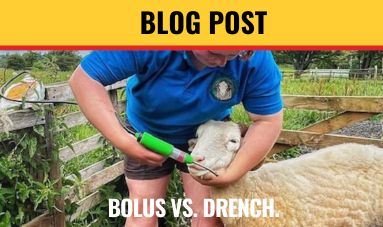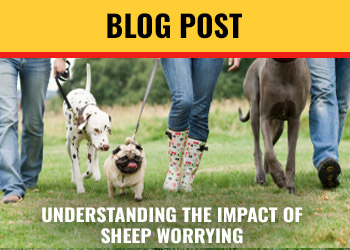Lambing
UNDERSTANDING BLUETONGUE DISEASE IN CATTLE AND SHEEP
With more cases coming to light, understanding Bluetongue Disease, from how it spreads to what you can do to prevent it, is key to keeping your livestock healthy and your farm running smoothly. In this post, we’ll explain what farmers need to know about Bluetongue and how to help you stay ahead of it.
BOLUS VS. DRENCH - CHOOSING THE RIGHT VITAMIN, MINERAL & TRACE ELEMENT SUPPLEMENTATION FOR LIVESTOCK
Ensuring the correct intake of balanced Vitamins and Minerals is essential for the productivity and health of livestock. Proper supplementation is a key component of any management plan, particularly in areas with known soil deficiencies or varying forage/grazing quality. When selecting a Vitamin/Mineral supplement, several factors should be considered, including the age, weight and breeding status of the animal, the forage being fed, the Vitamin and Mineral levels in feedstuffs, grazing and water sources, along with the overall goals you aim to achieve.
FINISHING LAMBS FOR BETTER RETURNS
Finishing lambs is a critical phase in sheep farming to ensure the optimum financial return and should be focused to the end market and ultimately current consumer requirements.
UNDERSTANDING THE IMPACT OF SHEEP WORRYING - OSMONDS CALL FOR RESPONSIBLE PET OWNERSHIP
Sheep worrying is a distressing issue that affects not only the livelihoods of farmers but also the welfare of animals and the peace of rural communities. It refers to the act of dogs distressing, chasing, attacking or even killing sheep, causing significant harm and often resulting in the loss of valuable livestock. This increasing problem highlights the importance of responsible pet ownership and the need for education and awareness to prevent such incidents from occurring.
UNDERSTANDING WATERY MOUTH DISEASE (WMD) IN LAMBS AND CAUSES, SYMPTOMS & TREATMENT
When it comes to raising healthy and thriving lambs, one of the most common challenges that farmers may encounter is a condition called Watery Mouth, which can also be referred to as ‘rattle belly’. Watery Mouth refers to an issue among lambs, particularly in the early days of life. In this blog post, we will explore what Watery Mouth is, its causes, symptoms and most importantly, how to effectively manage and prevent this condition while ensuring the well-being of your newborn lambs.
TWIN LAMB DISEASE – CAUSES, SIGNS AND TREATMENT
Twin Lamb Disease (TLD) is also called Pregnancy Toxaemia and it is more common in twin and triplet bearing ewes who have high energy demands.











